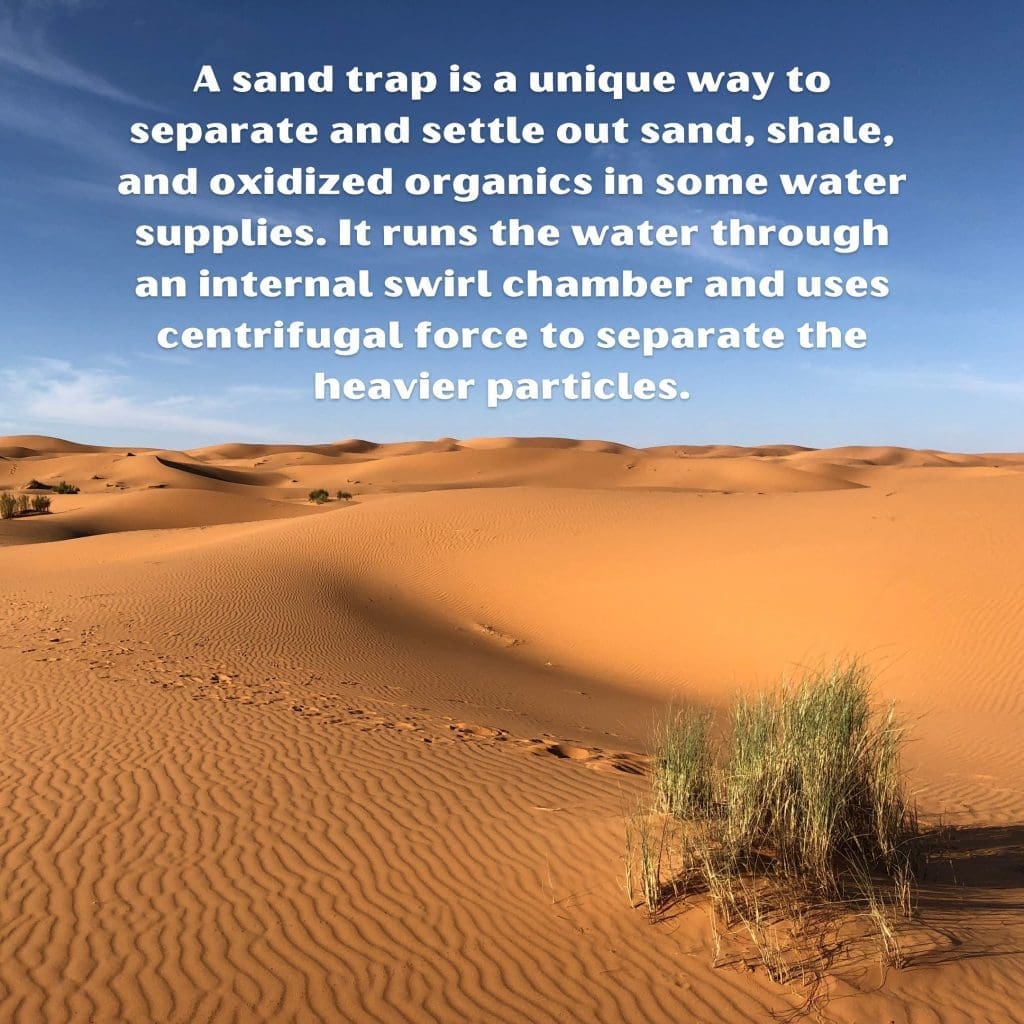If you have a private water well, you may have noticed that the water coming out of it has a gritty or sandy texture. This is not normal and can indicate contamination from sand in your private water well. How does sand get into my private water well? A sand trap is an important part of your water well system, and it prevents the possibility of sand from entering your well and clogging up pipes and filters, which can prevent water from flowing properly. A sand trap allows the water to flow through the lines in a home or building without problems, but it prevents any particles from entering the system that could cause damage or other issues.
This article will explore how sand can enter your home’s drinking supply and what to do if you suspect your well has been contaminated with this unwanted sediment.
How does sand get into my well?
Sand can enter your private water well through a variety of means. The most common way is through a pump failure or malfunction, which causes the sand to flow through your well and into your home. Well pump failure or malfunction can cause the sand to flow through your well and into your home. The well pump may be the source of the problem; if it’s not working properly, it could allow foreign objects like rocks and other debris to enter your water supply. Also, suppose there are cracks or leaks in pipes connecting this equipment with your private water well (such as those leading from underground tanks). In that case, they could allow sand particles to seep into their respective pipe sections until they reach their final destination: inside your house.
Also, sand flow from nearby soils and aquifers during construction or drilling may cause contamination when it reaches your private water supply. It’s important to follow proper construction and drilling protocols to prevent this type of issue from occurring. The best way to protect yourself against sand entering your water supply is by having a licensed professional install your well and perform regular maintenance afterward.
Sand can enter the well during improper maintenance, repair, or installation of the well itself. Poorly constructed wells can allow sand to enter as well. Sand is often brought up below ground by drilling equipment, installing, or replacing old wells. If you do not have a filter on your private water well, sand may get into it through cracks in its casing around which there is no cement lining (also called “slugging”). This occurs especially if there has been recent seismic activity in your area because this causes stress fractures in rock formations which will allow more cracks for silt and clay particles to pass through them easily into groundwater aquifers where they can clog filters on water pumps or filters located near intakes for municipal water supplies like those found at schools or hospitals.
What is a sand trap?
A sand trap is a device that removes sediment from water wells. It’s also sometimes called a “sand filter,” which can be confusing because it’s not always used to filter out all particles in the well water.
Sand filters come in many different sizes depending on how much space you need them to occupy inside pipes leading away from wells—they can range anywhere from 6 inches long up to 30 feet long.
Benefits of a sand trap:
- No moving parts
- No filter cartridges to clean or replace
- No backwashing needed
- No electricity is required
How do sand traps work?
The sand trap is a unique way to separate and settle out sand, shale, and oxidized organics in some water supplies. It runs the water through an internal swirl chamber and uses centrifugal force to separate the heavier particles.

Centrifugal force is the force that pushes objects away from the center of rotation. It’s often described as an “outward” or “away from the center” force, but this isn’t quite accurate; it’s perpendicular to both your direction of motion and gravity (since centrifugal forces act at right angles to each other). When a wheel or hoop spins around at a high-enough speed, the air skims off, creating an invisible barrier known as a “wall” of air. This is similar to if you were driving in your car and went past 200 miles per hour—the wind pushes against your vehicle and forms a cocoon around it.
The same thing happens with spinning objects; only instead of being pushed out by wind pressure (and therefore forming something like an energy barrier), centrifugal force pushes away from the center of rotation—and creates an invisible wall made up entirely of moving air particles like those found in wind gusts or hurricanes.
As these particles move outward from each other due to centrifugal force’s effect on them all being pulled toward one point (the center), they form walls around whatever object has been spun up enough so that its surface area can no longer support itself without falling apart first due to lack of structural integrity caused by rapid rotation speed.
In a sand trap, this process causes heavier particles to settle to the bottom of the tank for removal via a simple blow-down valve.
The system is virtually maintenance-free, with no moving parts and no sophisticated backwash control needed. It does not require electricity, and its drain water can be directed anywhere (for lawn irrigation, for example) since no chemicals are added.
A sand trap can be an important part of your water well system.
Sand traps can be an important part of your water well system. They prevent the well water from being contaminated by the surrounding soil, which may contain bacteria and other potentially harmful substances. Sand traps should be cleaned regularly to continue to work properly and keep your water safe for drinking or bathing.
If you discover that your well has been contaminated with sand, it is important to contact a licensed water treatment professional as soon as possible.
Keeping sand out of your private water well can be challenging, but it is important to do so. The contaminants found in the sand can cause problems with the quality of your water and may even lead to illness or disease if consumed over a long period.
Water wells are an important part of your home’s water system, providing water for drinking, bathing, and more. Sand traps are an important part of any well because they help keep sediment from entering the pump and damaging it. If you have questions about installing a sand trap or other well topics, please contact us today!









